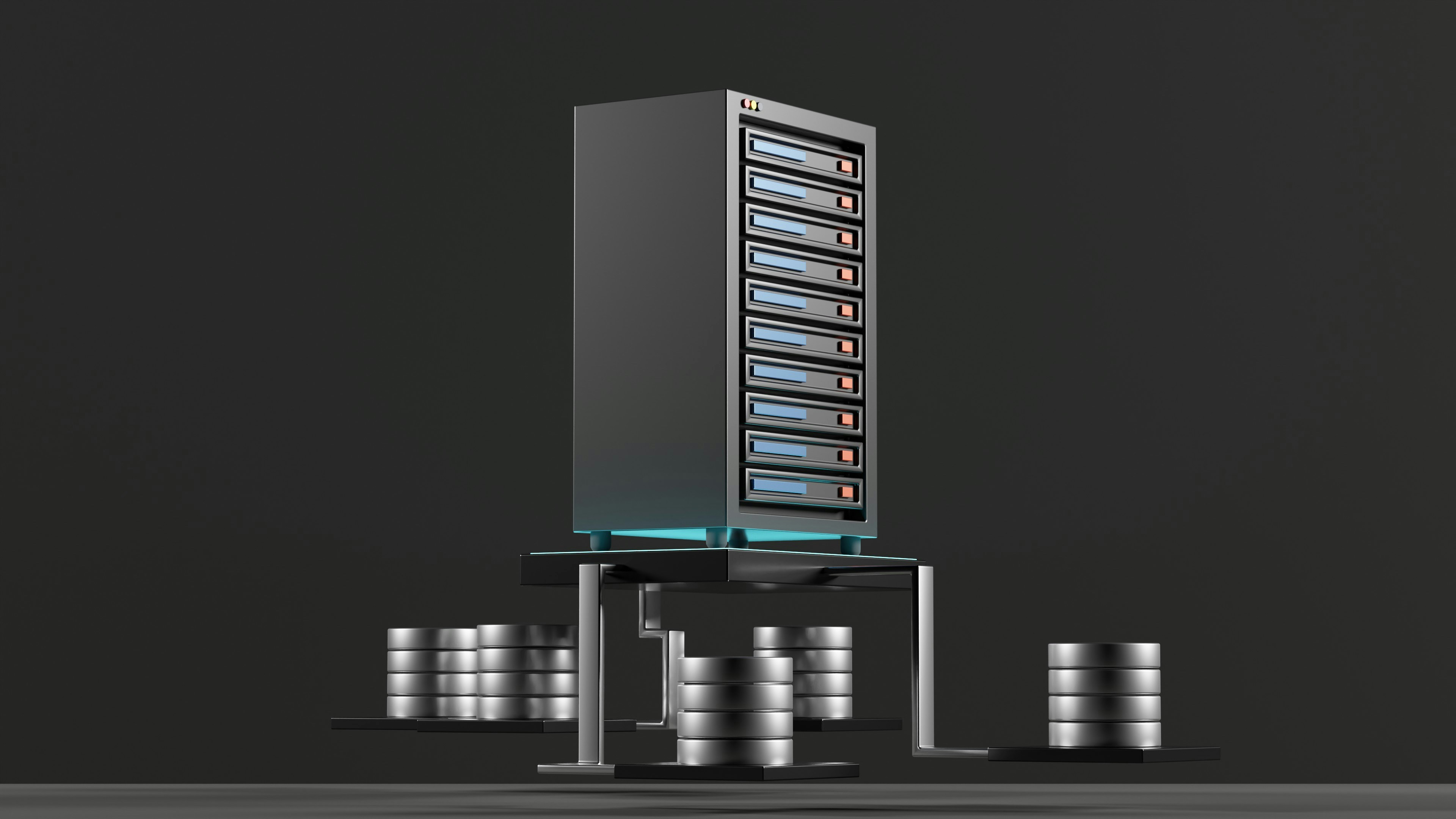Customer Data Infrastructure plays a crucial role in enabling businesses to gain valuable insights and drive growth through customer segmentation analysis. Imagine understanding your customers so well that you can deliver personalized experiences that drive loyalty and growth. This blog will provide you with insights on how to achieve this goal, helping you to not only understand your customers better but also deliver personalized experiences that foster loyalty and growth.
For a seamless and effective approach to achieving your objectives, consider utilizing Rengage.ai's solution. This tool will help you understand your customers better and deliver personalized experiences that foster loyalty and growth.
What Is Customer Data Infrastructure & Its Importance

A customer data platform (CDP) is software designed to collect and unify first-party customer data from various sources to create a comprehensive view of each customer. These sources can include behavioral data, like website and app interactions, transaction records, and demographic details such as names and addresses.
Why do Businesses Need a CDP?
There are three key reasons why businesses need a CDP.
- CDPs gather and connect all first-party data, eliminating silos within the marketing tools used by marketers and providing a consolidated, accurate overview of customer data.
- CDPs handle customer data management by ensuring that it meets data privacy regulations and manages consent and data flows between various marketing systems.
- A CDP enables businesses to activate customer data by segmenting audiences and leveraging the insights gathered for marketing purposes across multiple platforms and channels.
The Importance of a Robust Customer Data Infrastructure
Customer data infrastructure is crucial for modern businesses because of the vast amount of valuable data that businesses collect from their customers and consumers. This infrastructure enables businesses to store, manage, and analyze this data effectively. Having robust customer data infrastructure allows companies to gain a deeper understanding of their customers, needs, and preferences, enabling them to deliver personalized experiences.
Understanding Customers Better and Delivering Personalized Experiences
Robust customer data infrastructure helps organizations understand their customers better by collecting, unifying, and structuring customer data to create comprehensive customer profiles. By segmenting this data, businesses can identify patterns, preferences, and behaviors to personalize customer experiences effectively. Data activation on a customer data platform allows businesses to take action on customer insights and deliver relevant, targeted messages to customers across various marketing platforms.
4 Major Benefits of a Customer Data Infrastructure

1. Improve Customer Insights with a 360-degree Customer View
Customer Data Infrastructure (CDI) helps businesses consolidate customer data from various sources into a single, organized platform. This allows organizations to have a consolidated and consistent view of each customer, enhancing customer insights by providing a 360-degree profile based on data collated from all systems. This ensures data consistency, making it easier to access and analyze.
2. Leverage Machine Learning for Advanced Analysis
CDI systems can utilize machine learning capabilities to process large volumes of customer data efficiently. By analyzing these vast datasets, CDI systems can identify patterns and insights that would otherwise be challenging to uncover manually. This enables organizations to gain deeper insights and make data-driven decisions effectively.
3. Increase Operational Efficiency by Speeding Up Efforts
Centralizing customer data through a CDI solution eliminates the need to search for data across multiple platforms, accelerating the execution of marketing campaigns, audience segmentation, and other customer-related activities. This operational efficiency enables organizations to be more agile and responsive in catering to customer needs.
4. Save Time and Cost by Streamlining Data Management
By centralizing customer data storage and management, businesses can eliminate redundant tools and reduce the time spent on manual data cleaning and organization. This streamlining of processes not only saves time and effort but also reduces operational costs associated with managing scattered customer data.
Drive Loyalty and Growth with Rengage
We provide a comprehensive solution for managing and enhancing customer journeys, delivering insights and measurable outcomes with no code. We accelerate your customer journey from onboarding, activation to conversion and churn. Enabling customers to unlock revenue from their existing user.
With Rengage, you can get insights into your segments, run campaigns with an intuitive journey manager, and get insights to measure how your journeys impact users conversion through our Journey Moments and Journey Builder features.
- Journey Moments: insights into your micro-segments
- Journey Builder: intuitive multi-channel marketing automation
- Insights prediction and attribution.
Book a free demo to learn about how you can transform customer interactions into personalized experiences that drive loyalty and growth.
Related Reading
- Omnichannel Analytics
- Customer Data Integration
- Predicting Customer Behavior
- Marketing Data Platform
- Customer Data Platform Vs Data Management Platform
- Customer Data Platform Use Cases
- Best Customer Data Platform
- Customer Data Platform Capabilities
- Customer Data Platform Tools
- How To Choose Cdp
2 Main Types of Customer Data Infrastructure

1. Core CDI Overview: The Foundation of Customer Data Infrastructure
The basic building blocks of any Customer Data Infrastructure are the core components. These include the front-end website, back-end systems, databases to store collected data, webhooks, and event pipelines. The website refers to the user interface where customers interact with the organization, while the back-end systems process and store this data.
Databases are crucial for organizing and storing customer information efficiently. Webhooks are unique URLs generated by some APIs that transmit data to servers when specific events occur. Event pipelines are data pipelines that collect and distribute customer data throughout the organization.
2. Enhanced CDI Overview: Building Upon the Core for More Robust Customer Data Management
Beyond the core components, an effective Customer Data Infrastructure should include enhanced elements like schema definition and governance, identity resolution tools, and personally identifiable information (PII) handling. Schema definition and governance establish rules for data processing to ensure data consistency and compliance with legal requirements. Identity resolution tools consolidate user data into a unified profile, and PII handling is crucial for securely managing sensitive customer information in accordance with privacy laws.
6 Steps to Implement Customer Data Infrastructure at Your Organization

1. Data Strategy
I always advise businesses to establish a data strategy before diving into building a customer data infrastructure. This involves setting clear objectives for what you aim to achieve with your data. Whether the goal is to integrate specific martech solutions or enhance customer profiles, it is crucial to have a clear direction to guide your efforts. Consult your data and infrastructure teams to understand the possibilities and limitations.
2. Data Model
The data model plays a critical role in determining how your data and metadata will be organized. It defines how the data collected by your tools will be structured and cataloged to ensure compatibility with other tools. Collaborate with your data and infrastructure teams to develop a standardized data model that aligns with your CDI and remains flexible to accommodate future needs.
3. Data Storage
You need a reliable solution to store the data you're gathering. There are three primary options to consider: a data lake, a data warehouse, or a hybrid of both. For marketing purposes, a data warehouse or a hybrid approach is typically more suitable. The choice between a data lake and a data warehouse depends on your business goals, existing tools, and selected data model.
4. Data Hygiene
Data hygiene is vital to ensure that the data you possess is clean and organized effectively. Perform a thorough audit of your existing data to identify incomplete, outdated, or duplicated entries before integrating it into your storage solution. Establish a data cleaning process that aligns with your data model to enhance data quality.
5. Extract, Transform, Load (ETL) Pipeline
The ETL pipeline is where your data storage shelves are filled and organized. This process involves extracting data from marketing tools, transforming it according to your data model, and loading it into your storage solution. Your technical teams will likely handle these tasks and optimize the ETL pipeline to ensure the seamless ingestion of data.
6. Data Governance Program
Implementing a data governance program is essential to maintain data integrity, availability, usability, quality, compliance, and security. Establish internal policies and procedures around data handling to address any issues related to data accuracy, accessibility, and protection. Have a plan in place to address any data governance issues that may arise.
Related Reading
- Customer Retention Automation
- Customer Data Integration Best Practices
- Real Time Customer Segmentation
- Chat CDP
- Customer Data Platform Implementation
- Benefits Of A Customer Data Platform
- Customer Segmentation Solutions
- Omnichannel Measurement
- AI Customer Segmentation
- AI CDP
- Customer Data Platform GDPR
- Customer Data Platform Costs
- CDP Personalization
What Tools Do I Need to Implement Customer Data Infrastructure?

Tools to gather and ingest data
1. Third-party tools
These tools help collect data from various sources, such as social media platforms (e.g., Instagram, TikTok, Meta, SnapChat), analytics tools, and ad placement integrations. This data is essential for creating a comprehensive Customer Data Infrastructure (CDI).
2. Customer data tools
These tools are crucial for tracking events, gathering data from web or mobile apps and web servers. They provide the raw data that is ingested into the CDI.
Tools to process and integrate data
3. Data storage solutions
A data lake or data warehouse is necessary for storing and managing the vast amounts of customer data. Platforms like Snowflake, Amazon Web Services, Microsoft Azure, or Google Cloud BigQuery offer cloud storage solutions for scalability.
4. Cloud storage solutions
Tools like Fivetran facilitate the movement of data from various sources into the central data warehouse. This integration is a crucial step in ensuring that all relevant data is captured in the CDI.
5. Identity resolution and data activation tools
Customer Data Platforms (CDPs) help in resolving identity across various touchpoints and activating data for personalized marketing campaigns. These tools play a vital role in enhancing customer experiences.
Tools that use data
6. Customer Relationship Management (CRM) platforms
CRM platforms leverage customer data to improve customer interactions and drive sales. By integrating CRM data into the CDI, organizations can enhance their customer segmentation and targeting strategies.
7. Customer journey orchestration platforms
These platforms analyze the customer journey and help in creating personalized experiences. Utilizing data from the CDI, organizations can tailor marketing messages and offers based on the customer's stage in the journey.
8. Internal dashboards
Internal dashboards provide real-time insights into customer behavior, which can be used to optimize marketing campaigns, product development, and customer service strategies. Integrating the CDI with internal dashboards allows for data-driven decision-making.
9. Reporting platforms
Reporting platforms help visualize and analyze customer data to derive actionable insights. By connecting the CDI with reporting tools, organizations can create custom reports, dashboards, and data visualizations.
10. Artificial intelligence or machine learning tools
AI and ML tools leverage customer data to predict customer behavior, personalize offers, and optimize marketing efforts. Integrating these tools with the CDI enhances the accuracy of customer segmentation and targeting.
11. Data governance tools
Data governance tools ensure compliance with data privacy regulations and maintain data integrity within the CDI. By implementing robust data governance practices, organizations can minimize risks associated with data breaches and enhance customer trust.
12. Future data needs or projects
Anticipating future data needs and projects is essential for the CDI's scalability and sustainability. By aligning the CDI with the organization's long-term goals, businesses can effectively adapt to changing customer behaviors and market trends.
3 Tips & Best Practices for a Robust Customer Data Infrastructure

1. Obtaining Clean Data
To get the most out of your customer data infrastructure, the starting point should be obtaining clean, accurate, and relevant data. Your sales team needs access to precise market information, allowing them to develop strategies to increase sales in areas with limited market coverage.
By ensuring that you have collected the right data, you can avoid targeting the wrong market and wasting time and effort. Having a straightforward process for collecting clean data reduces the risk of skewed or duplicated statistics, ultimately guiding you to make informed decisions.
2. Goal Definition
Every business has various forms of data, collected either manually or through automated processes. To enhance this process, it is crucial first to define your business goals. Whether you aim to penetrate untapped markets or enhance the product experience for existing customers, setting clear goals helps prioritize the data that is most critical for your objectives.
3. Security & Auditing
The final step in ensuring a robust customer data infrastructure is maintaining security and conducting regular audits to eliminate confusion. Utilizing tools like BigQuery audit logs can help you understand the queries made on your infrastructure. Implementing a robust authentication and authorization process is crucial. By creating strong user authentication methods, the owner can restrict access to datasets through row-level security, enhancing the security of your customer data infrastructure.
Create Personalized Experiences That Drive Loyalty and Growth with Rengage — Book A Free Demo Today
Transforming Customer Interactions with Rengage Customer Data Infrastructure
In customer segmentation analysis, I can confidently say that implementing a robust Customer Data Infrastructure (CDI) like Rengage can revolutionize customer interactions and drive business growth.
Enhancing Customer Journeys
With Rengage, businesses can seamlessly manage and enhance customer journeys. By leveraging the power of no-code solutions, companies can accelerate customer journeys from onboarding to conversion and minimize churn rates. Through insightful data analysis, Rengage enables businesses to unlock revenue from existing user bases.
Insights into Segments
Rengage provides valuable insights into customer segments, allowing businesses to better understand their audience. By exploring micro-segments, companies can craft more targeted marketing campaigns that resonate with specific customer groups.
Intuitive Journey Manager
Through Rengage's Journey Builder feature, companies can create multi-channel marketing automation campaigns with ease. This intuitive tool streamlines the process of designing engaging customer journeys, ensuring that businesses can connect with their audience effectively.
Predictive Insights and Attribution
Rengage's predictive insights help businesses forecast customer behavior and attribute conversions accurately. By understanding how different touchpoints influence user actions, companies can optimize their customer journeys for better outcomes.
Measuring Impact
With Rengage's Journey Moments feature, businesses can track how their customer journey initiatives impact user conversion rates. By gaining a deeper understanding of the effectiveness of various campaigns, companies can refine their strategies for greater success.
Related Reading
- CDP Marketing Automation
- Customer Data Platform Vs Marketing Automation
- Ecommerce Cdp
- Totango Competitors
- Centralized Marketing Data
- Customer Data Management Best Practices
- Segment Alternatives
- Blueconic Cdp
- Emarsys Competitors
- Actioniq Competitors
